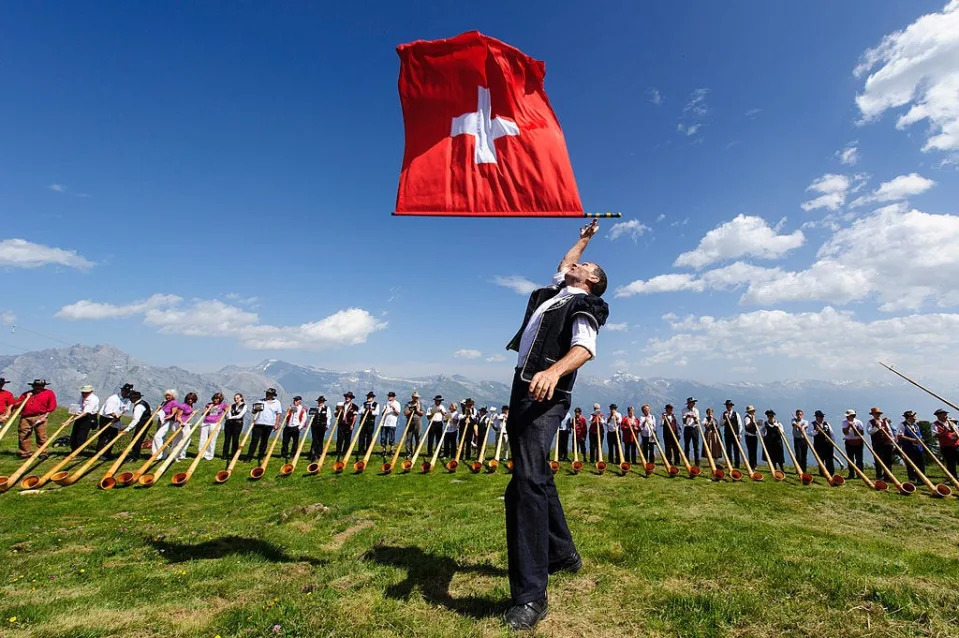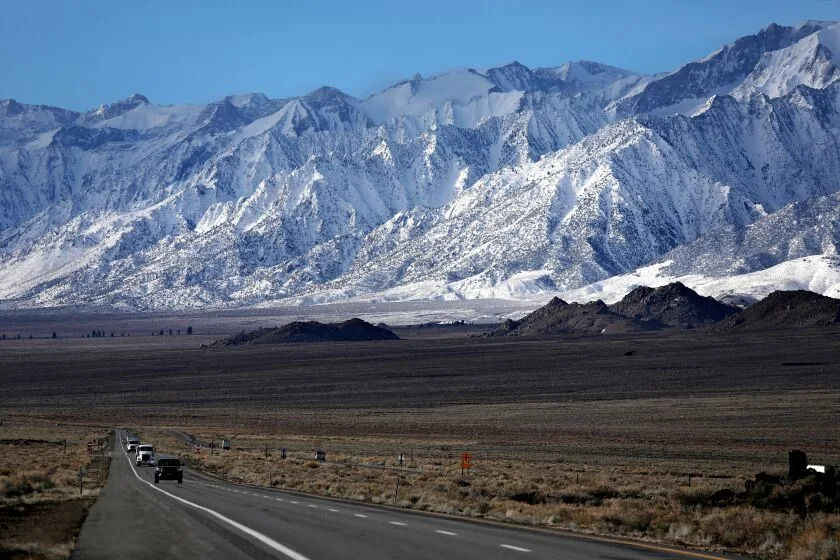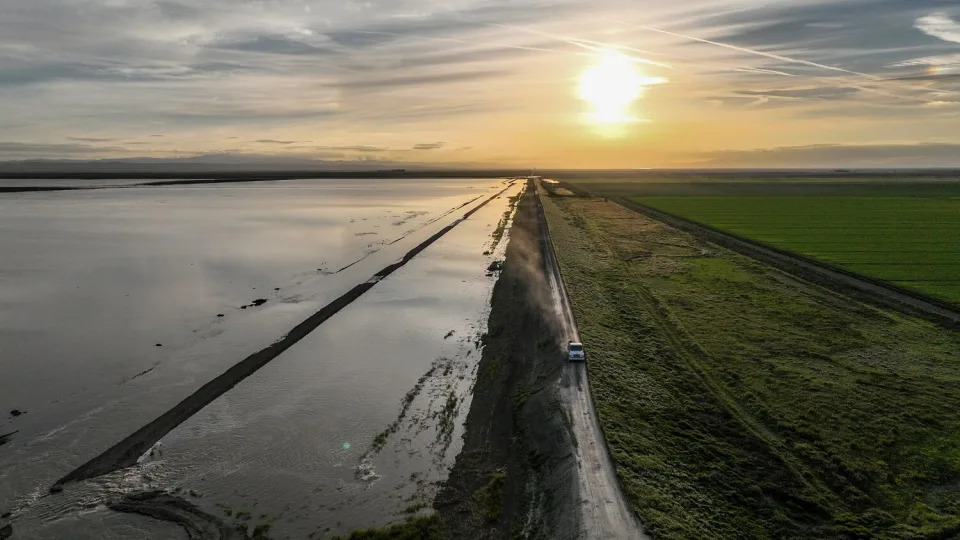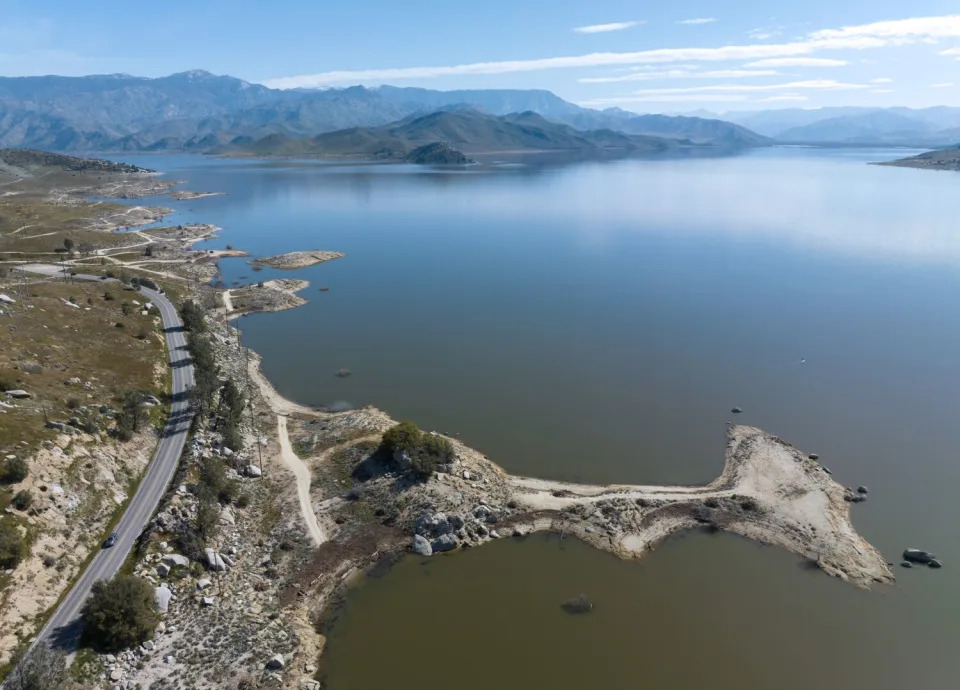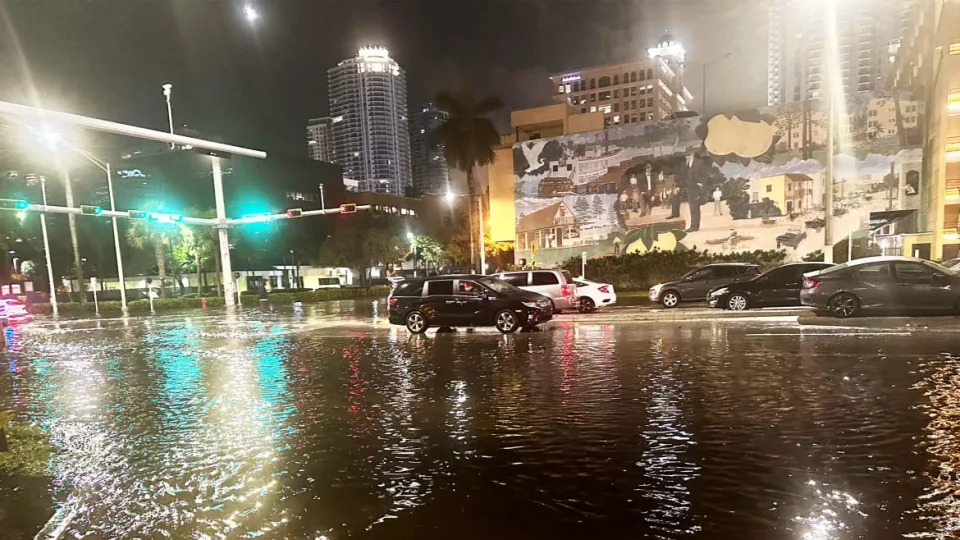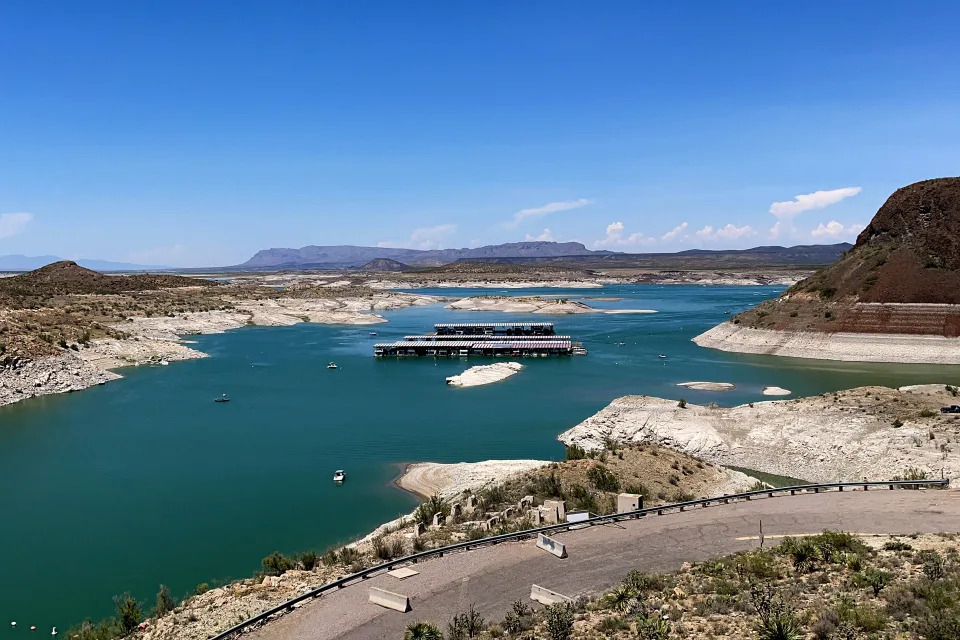Resilience – Energy
Will the West Turn Ukraine into a Nuclear Battlefield?
By Joshua Frank, originally published by Tom Dispatch
April 20, 2023
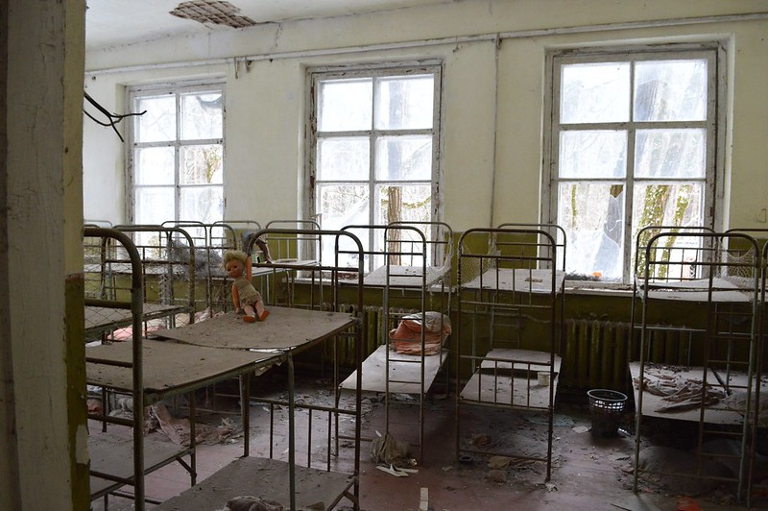
Why Depleted Uranium Should Have No Place There
It’s sure to be a blood-soaked spring in Ukraine. Russia’s winter offensive fell far short of Vladimir Putin’s objectives, leaving little doubt that the West’s conveyor belt of weaponry has aided Ukraine’s defenses. Cease-fire negotiations have never truly begun, while NATO has only strengthened its forces thanks to Finland’s new membership (with Sweden soon likely to follow). Still, tens of thousands of people have perished; whole villages, even cities, have been reduced to rubble; millions of Ukrainians have poured into Poland and elsewhere; while Russia’s brutish invasion rages on with no end in sight.
The hope, according to Ukrainian President Volodymyr Zelensky, is that the Western allies will continue to furnish money, tanks, missiles, and everything else his battered country needs to fend off Putin’s forces. The war will be won, according to Zelensky, not through backroom compromises but on the battlefield with guns and ammo.
“I appeal to you and the world with these most simple and yet important words,” he said to a joint session of Great Britain’s parliament in February. “Combat aircraft for Ukraine, wings for freedom.”
The United Kingdom, which has committed well over $2 billion in assistance to Ukraine, has so far refused to ship fighter jets there but has promised to supply more weaponry, including tank shells made with depleted uranium (DU), also known as “radioactive bullets.” A by-product of uranium enrichment, DU is a very dense and radioactive metal that, when housed in small torpedo-like munitions, can pierce thickly armored tanks and other vehicles.
Reacting to the British announcement, Putin ominously said he would “respond accordingly” if the Ukrainians begin blasting off rounds of DU.
While the UK’s decision to send depleted-uranium shells to Ukraine is unlikely to prove a turning point in the war’s outcome, it will have a lasting, potentially devastating, impact on soldiers, civilians, and the environment. The controversial deployment of DU doesn’t pose faintly the same risks as the actual nuclear weapons Putin and his associates have hinted they might use someday in Ukraine or as would a potential meltdown at the embattled Zaporizhzhia nuclear facility in that country. Still, its use will certainly help create an even more lethal, all too literally radioactive theater of war — and Ukraine will end up paying a price for it.
The Radioactive Lions of Babylon
Stuart Dyson survived his deployment in the first Gulf War of 1991, where he served as a lance corporal with Britain’s Royal Pioneer Corps. His task in Kuwait was simple enough: he was to help clean up “dirty” tanks after they had seen battle. Many of the machines he spent hours scrubbing down had carried and fired depleted uranium shells used to penetrate and disable Iraq’s T-72 tanks, better known as the Lions of Babylon.
Dyson spent five months in that war zone, ensuring American and British tanks were cleaned, armed, and ready for battle. When the war ended, he returned home, hoping to put his time in the Gulf War behind him. He found a decent job, married, and had children. Yet his health deteriorated rapidly and he came to believe that his military service was to blame. Like so many others who had served in that conflict, Dyson suffered from a mysterious and debilitating illness that came to be known as Gulf War Syndrome.
After Dyson suffered years of peculiar ailments, ranging from headaches to dizziness and muscle tremors, doctors discovered that he had a severe case of colon cancer, which rapidly spread to his spleen and liver. The prognosis was bleak and, after a short battle, his body finally gave up. Stuart Dyson died in 2008 at the age of 39.
His saga is unique, not because he was the only veteran of the first Gulf War to die of such a cancer at a young age, but because his cancer was later recognized in a court of law as having been caused by exposure to depleted uranium. In a landmark 2009 ruling, jurors at the Smethwick Council House in the UK found that Dyson’s cancer had resulted from DU accumulating in his body, and in particular his internal organs.
“My feeling about Mr. Dyson’s colon cancer is that it was produced because he ingested some radioactive material and it became trapped in his intestine,” Professor Christopher Busby, an expert on the effects of uranium on health, said in his court testimony. “To my mind, there seems to be a causal arrow from his exposure to his final illness. It’s certainly much more probable than not that Mr. Dyson’s cancer was caused by exposure to depleted uranium.”
The U.S. Department of Defense estimated that American forces fired more than 860,000 rounds of DU shells during that 1991 war to push Iraqi autocrat Saddam Hussein’s military out of Kuwait. The result: a poisoned battlefield laced with radioactive debris, as well as toxic nerve agents and other chemical agents.
In neighboring southern Iraq, background radiation following that war rose to 30 times normal. Tanks tested after being shelled with DU rounds had readings 50 times higher than average.
“It’s hot forever,” explains Doug Rokke, a former major in the U.S. Army Reserve’s Medical Service Corps who helped decontaminate dozens of vehicles hit by DU shells during the first Gulf War. “It doesn’t go away. It only disperses and blows around in the wind,” he adds. And of course, it wasn’t just soldiers who suffered from DU exposure. In Iraq, evidence has been building that DU, an intense carcinogenic agent, has led to increases in cancer rates for civilians, too.
“When we were moving forward and got north of a minefield, there were a bunch of blown-out tanks that were near where we would set up a command post,” says Jason Peterson, a former American Marine who served in the first Gulf War. “Marines used to climb inside and ‘play’ in them … We barely knew where Kuwait was, let alone the kind of ammunition that was used to blow shit up on that level.”
While it’s difficult to discern exactly what caused the Gulf War Syndrome from which Dyson and so many other soldiers suffered (and continue to suffer), experts like Rokke are convinced that exposure to depleted uranium played a central role in the illness. That’s an assertion Western governments have consistently downplayed. In fact, the Pentagon has repeatedly denied any link between the two.
“I’m a warrior, and warriors want to fulfill their mission,” Rokke, who also suffers from Gulf War Syndrome, told Vanity Fair in 2007. “I went into this wanting to make it work, to work out how to use DU safely, and to show other soldiers how to do so and how to clean it up. This was not science out of a book, but science done by blowing the shit out of tanks and seeing what happens. And as we did this work, slowly it dawned on me that we were screwed. You can’t do this safely in combat conditions. You can’t decontaminate the environment or your own troops.”
Death to Uranium
Depleted uranium can’t produce a nuclear explosion, but it’s still directly linked to the development of atomic weaponry. It’s a by-product of the uranium enrichment process used in nuclear weapons and fuel. DU is alluring to weapons makers because it’s heavier than lead, which means that, if fired at a high velocity, it can rip through the thickest of metals.
That it’s radioactive isn’t what makes it so useful on the battlefield, at least according to its proponents. “It’s so dense and it’s got so much momentum that it just keeps going through the armor — and it heats it up so much that it catches on fire,” says RAND nuclear expert and policy researcher Edward Geist.
The manufacturing of DU dates back to the 1970s in the United States. Today, the American military employs DU rounds in its M1A2 Abrams tanks. Russia has also used DU in its tank-busting shells since at least 1982 and there are plenty of accusations, though as yet no hard evidence, that Russia has already deployed such shells in Ukraine. Over the years, for its part, the U.S. has fired such rounds not just in Kuwait, but also in Bosnia, Iraq, Kosovo, Syria, and Serbia as well.
Both Russia and the U.S. have reasons for using DU, since each has piles of the stuff sitting around with nowhere to put it. Decades of manufacturing nuclear weapons have created a mountain of radioactive waste. In the U.S., more than 500,000 tons of depleted-uranium waste has built up since the Manhattan Project first created atomic weaponry, much of it in Hanford, Washington, the country’s main plutonium production site. As I investigated in my book Atomic Days: The Untold Story of the Most Toxic Place in America, Hanford is now a cesspool of radioactive and chemical waste, representing the most expensive environmental clean-up project in history with an estimated price tag of $677 billion.
Uranium, of course, is what makes the whole enterprise viable: you can’t create atomic bombs or nuclear power without it. The trouble is that uranium itself is radioactive, as it emits alpha particles and gamma rays. That makes mining uranium one of the most dangerous operations on the planet.
Keep It in the Ground
In New Mexico, where uranium mines were primarily worked by Diné (Navajo People), the toll on their health proved gruesome indeed. According to a 2000 study in the Journal of Occupational and Environmental Medicine, rates of lung cancer in Navajo men who mined uranium were 28 times higher than in those who never mined uranium. The “Navajo experience with uranium mining,” it added, “is a unique example of exposure in a single occupation accounting for the majority of lung cancers in an entire population.”
Scores of studies have shown a direct correlation between exposure to uranium and kidney disease, birth defects in infants (when mothers were exposed), increased rates of thyroid disease, and several autoimmune diseases. The list is both extensive and horrifying.
“My family had a lot of cancer,” says anti-nuclear activist and Indigenous community organizer Leona Morgan. “My grandmother died of lung cancer and she never smoked. It had to be the uranium.”
One of the largest radioactive accidents, and certainly the least reported, occurred in 1979 on Diné land when a dam broke, flooding the Puerco River near Church Rock, New Mexico, with 94 million gallons of radioactive waste. The incident received virtually no attention at the time. “The water, filled with acids from the milling process, twisted a metal culvert in the Puerco and burned the feet of a little boy who went wading. Sheep keeled over and died, while crops curdled along the banks. The surge of radiation was detected as far away as Sanders, Arizona, fifty miles downstream,” writes Judy Pasternak in her book Yellow Dirt: A Poisoned Land and the Betrayal of the Navajo.
Of course, we’ve known about the dangers of uranium for decades, which makes it all the more mind-boggling to see a renewed push for increased mining of that radioactive ore to generate nuclear power. The only way to ensure that uranium doesn’t poison or kill anyone is to leave it right where it’s always been: in the ground. Sadly, even if you were to do so now, there would still be tons of depleted uranium with nowhere to go. A 2016 estimate put the world’s mountain of DU waste at more than one million tons (each equal to 2,000 pounds).
So why isn’t depleted uranium banned? That’s a question antinuclear activists have been asking for years. It’s often met with government claims that DU isn’t anywhere near as bad as its peacenik critics allege. In fact, the U.S. government has had a tough time even acknowledging that Gulf War Syndrome exists. A Government Accountability Office report released in 2017 found that the Veterans Affairs Department had denied more than 80% of all Gulf War illness claims by veterans. Downplaying DU’s role, in other words, comes with the terrain.
“The use of DU in weapons should be prohibited,” maintains Ray Acheson, an organizer for the International Campaign to Abolish Nuclear Weapons and author of Banning the Bomb, Smashing the Patriarchy. “While some governments argue there is no definitive proof its use in weapons causes harm, it is clear from numerous investigations that its use in munitions in Iraq and other places has caused impacts on the health of civilians as well as military personnel exposed to it, and that it has caused long-term environmental damage, including groundwater contamination. Its use in weapons is arguably in violation of international law, human rights, and environmental protection and should be banned in order to ensure it is not used again.”
If the grisly legacy of the American use of depleted uranium tells us anything, it’s that those DU shells the British are supplying to Ukraine (and the ones the Russians may also be using there) will have a radioactive impact that will linger in that country for years to come, with debilitating, potentially fatal, consequences. It will, in a sense, be part of a global atomic war that shows no sign of ending.












